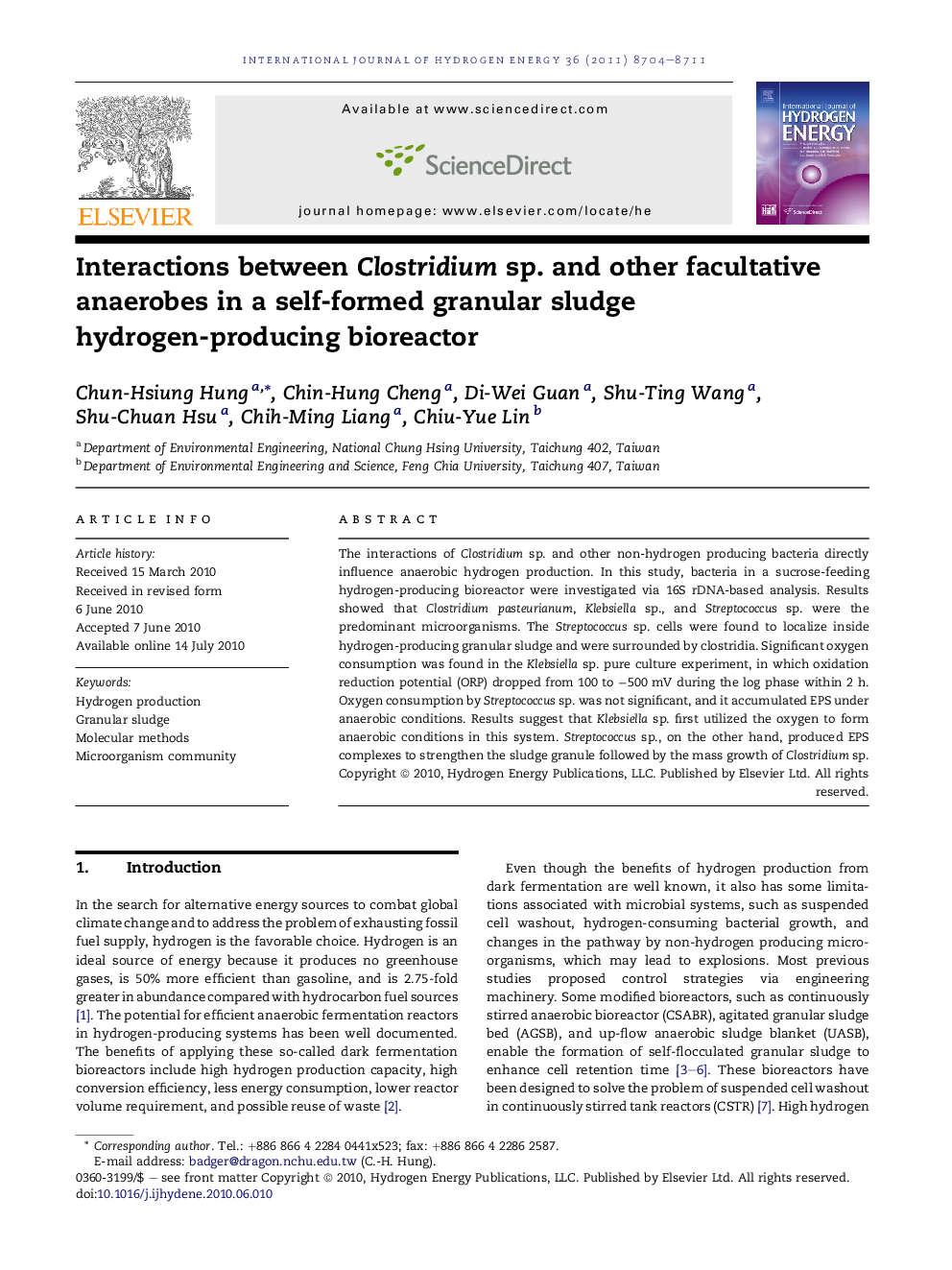| Article ID | Journal | Published Year | Pages | File Type |
|---|---|---|---|---|
| 1279190 | International Journal of Hydrogen Energy | 2011 | 8 Pages |
The interactions of Clostridium sp. and other non-hydrogen producing bacteria directly influence anaerobic hydrogen production. In this study, bacteria in a sucrose-feeding hydrogen-producing bioreactor were investigated via 16S rDNA-based analysis. Results showed that Clostridium pasteurianum, Klebsiella sp., and Streptococcus sp. were the predominant microorganisms. The Streptococcus sp. cells were found to localize inside hydrogen-producing granular sludge and were surrounded by clostridia. Significant oxygen consumption was found in the Klebsiella sp. pure culture experiment, in which oxidation reduction potential (ORP) dropped from 100 to −500 mV during the log phase within 2 h. Oxygen consumption by Streptococcus sp. was not significant, and it accumulated EPS under anaerobic conditions. Results suggest that Klebsiella sp. first utilized the oxygen to form anaerobic conditions in this system. Streptococcus sp., on the other hand, produced EPS complexes to strengthen the sludge granule followed by the mass growth of Clostridium sp.
